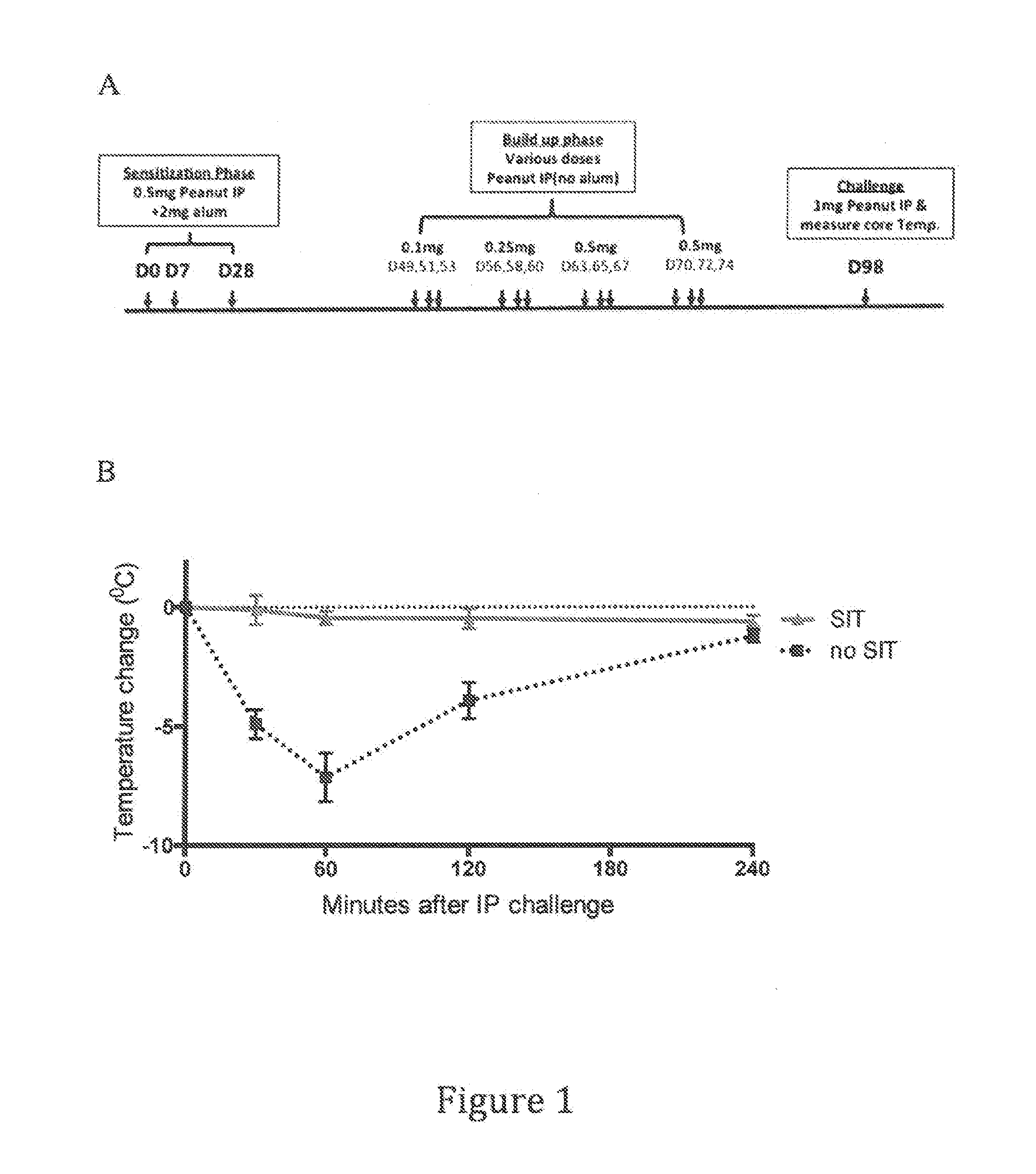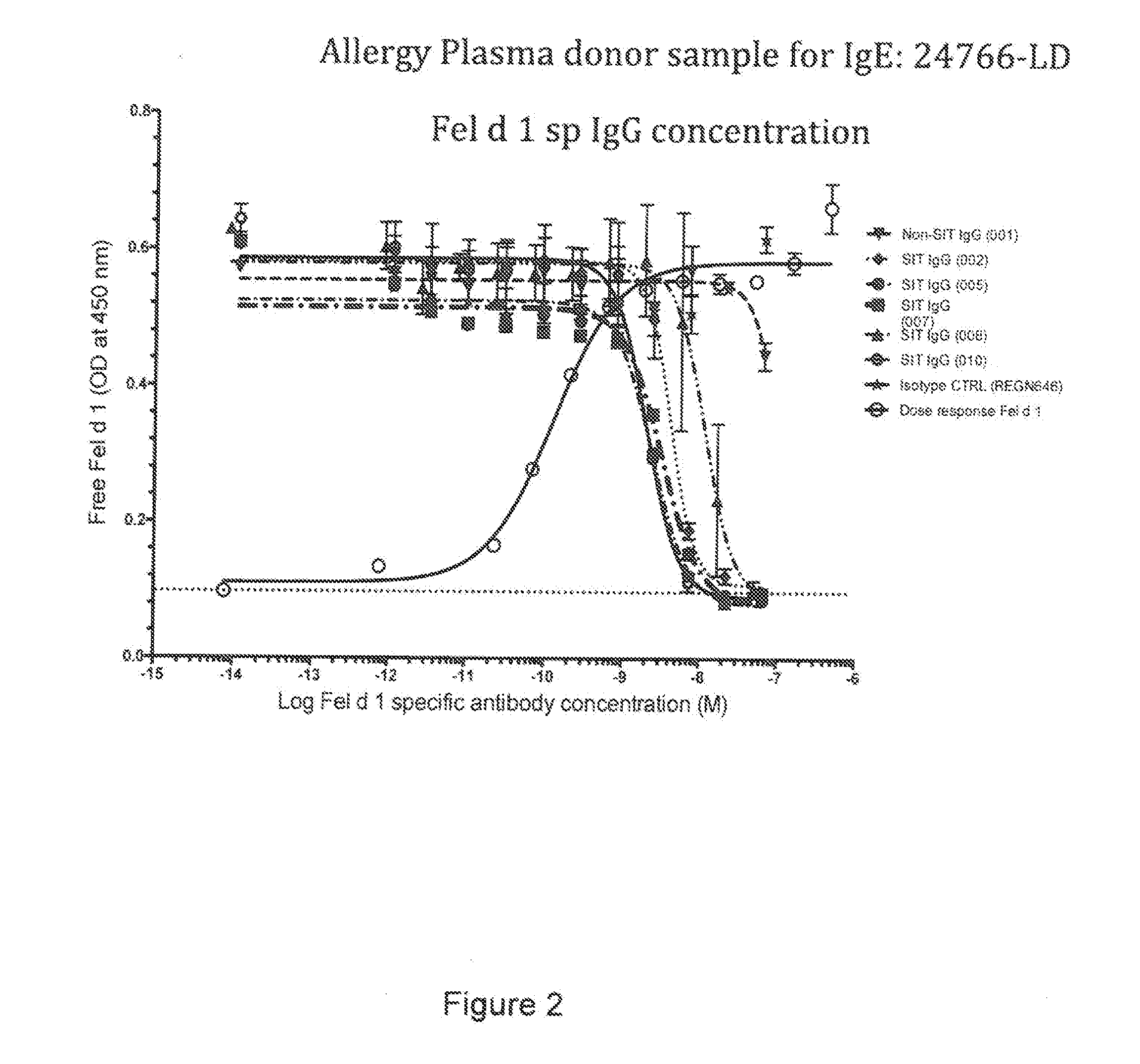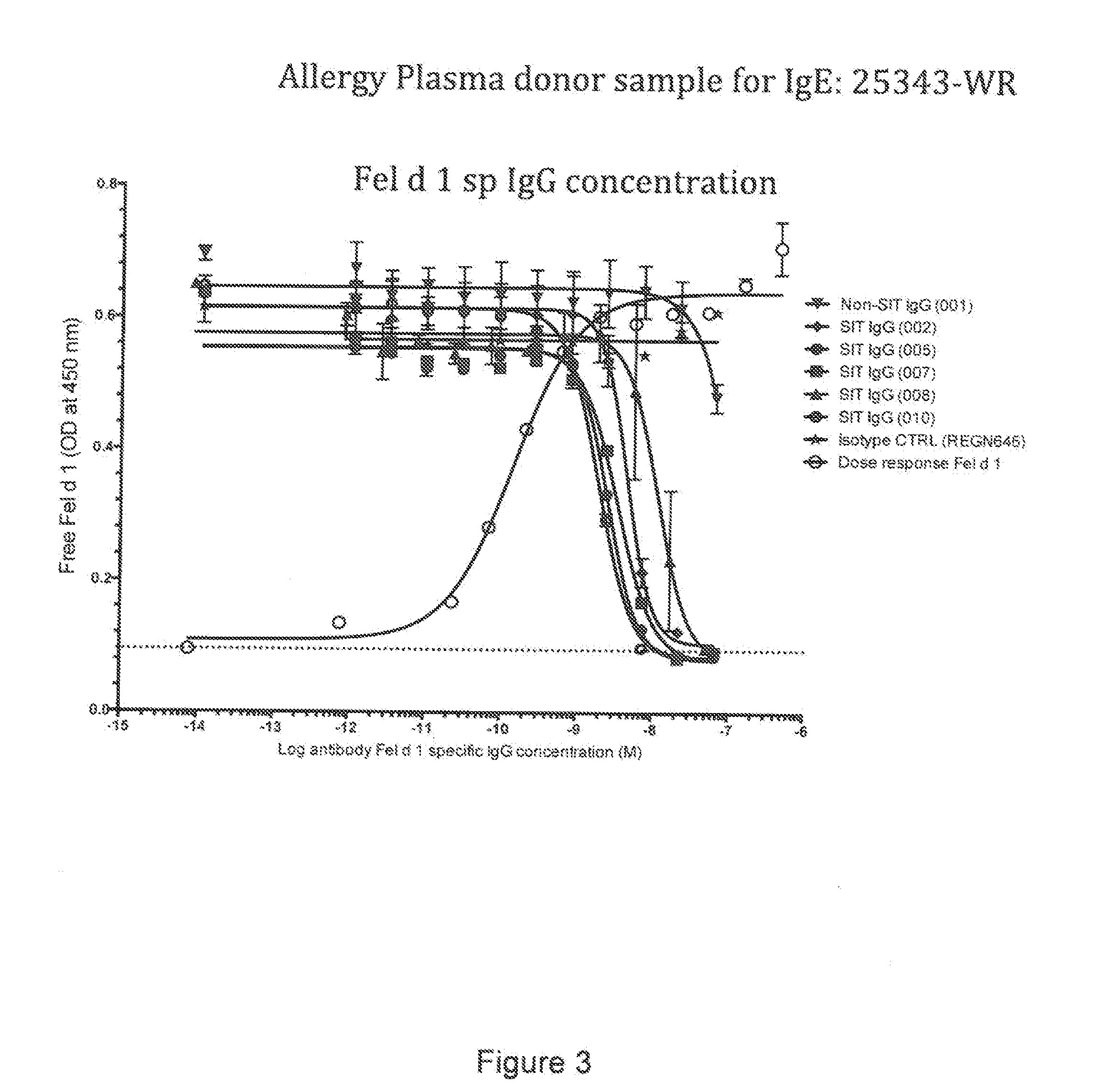Diagnostic tests and methods for assessing safety, efficacy or outcome of allergen-specific immunotherapy (SIT)
a technology of allergen-specific immunotherapy and diagnostic tests, which is applied in the direction of biological material analysis, instruments, material analysis, etc., can solve the problems of inability to avoid allergens, inability to accurately detect the presence of allergens,
- Summary
- Abstract
- Description
- Claims
- Application Information
AI Technical Summary
Benefits of technology
Problems solved by technology
Method used
Image
Examples
example 1
Blocking Mast Cell Degranulation by Polyclonal Antibodies Generated During Allergen-Specific Immunotherapy Against the Cat Allergen Fel d1 and with Human Monoclonal Antibodies that Specifically Bind Fel d1
[0229]The passive cutaneous anaphylaxis (PCA) in vivo model is used to assess in vivo mast cell degranulation. The model relies on the passive transfer of antisera containing allergen-specific mouse polyclonal IgE, which binds to FcεR1 on mast cells near the site of administration. The mice are effectively “sensitized” locally to the specific antigen(s) (either Fel d 1 or peanut as a control) used to generate the antiserum. When antigen is subsequently injected systemically as an allergen challenge along with Evan's blue dye, antigen-induced mast cell degranulation results in rapid capillary dilation and increased vascular permeability that can be visualized and quantitated by measuring dye leakage into the reaction site. In this model, the peanut-sensitized ear provides an interna...
example 2
Peanut Specific Antibodies Generated Through Allergen Specific Immunotherapy Block Mast Cell Degranulation in a Mouse Peanut Allergy Model
Methods / Experimental Design
[0241]A mouse peanut specific immunotherapy model was developed based in part on the model delineated in Kulis et al., J. Allergy Clin Immunol. 127(1):81-88(2011). An outline of the experimental protocol is shown in FIG. 1a. Two groups of mice were used in these experiments. One group (SIT′) was subjected to a peanut specific immunotherapy regimen comprising a Sensitization Phase, a Build-up Phase, and a Challenge. The Sensitization Phase consisted of administration of 0.5 mg peanut extract (Greer laboratories, Part Number XPF171D3A25)+2 mg Alum administered intraperitoneally on Days 0, 7 and 28. The Build-up Phase consisted of twelve separate intraperitoneal administrations of various increasing doses of peanut extract shown in FIG. 1a without Alum on Days 49, 51, 53, 56, 58, 60, 63, 65, 67, 70, 72 and 74. The Challenge...
example 3
An In Vitro Assay / Method to Assess the Ability of Antibodies to Block the Binding of Allergen-Specific Polyclonal IgE to Allergen
[0247]Below is described an assay to evaluate the blockade of Fel d 1 binding to cat allergic human IgE by Fel d 1-specific IgGs isolated from subjects treated by allergen specific immunotherapy (SIT).
Blocking Fel d 1 Binding to Allergen Specific IgE by Antibodies Isolated from Patients Undergoing SIT
[0248]The ability of IgG antibodies from a cat allergic SIT patient serum to block Fel d 1 binding to plate-captured IgE from cat allergic human donor plasma / sera was determined using a blocking ELISA. Microtiter plates were coated overnight at 4° C. with a human FcεR1a (the high affinity receptor for IgE) extracellular domain protein that was produced with a C-terminal mouse Fc tag (hFcεR1α-mFc; SEQ ID NO: 51). Plates were blocked with 0.5% BSA (w / v) for 1 hour at room temperature (RT). Plasma from Fel d 1 cat positive allergic donors (Plasma Lab Internationa...
PUM
| Property | Measurement | Unit |
|---|---|---|
| concentration | aaaaa | aaaaa |
| concentration | aaaaa | aaaaa |
| concentration | aaaaa | aaaaa |
Abstract
Description
Claims
Application Information
 Login to View More
Login to View More - R&D
- Intellectual Property
- Life Sciences
- Materials
- Tech Scout
- Unparalleled Data Quality
- Higher Quality Content
- 60% Fewer Hallucinations
Browse by: Latest US Patents, China's latest patents, Technical Efficacy Thesaurus, Application Domain, Technology Topic, Popular Technical Reports.
© 2025 PatSnap. All rights reserved.Legal|Privacy policy|Modern Slavery Act Transparency Statement|Sitemap|About US| Contact US: help@patsnap.com



